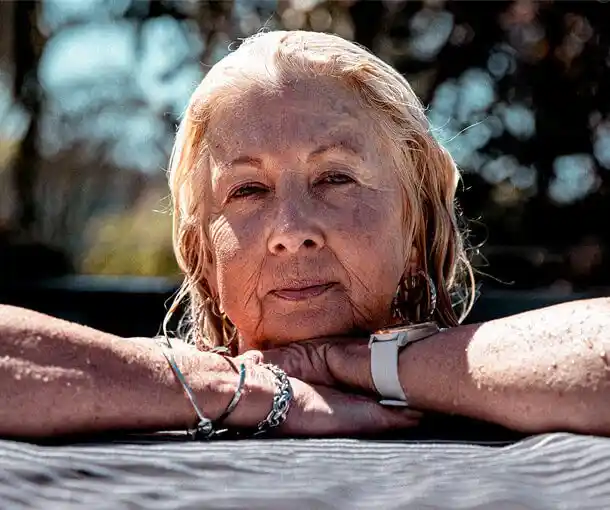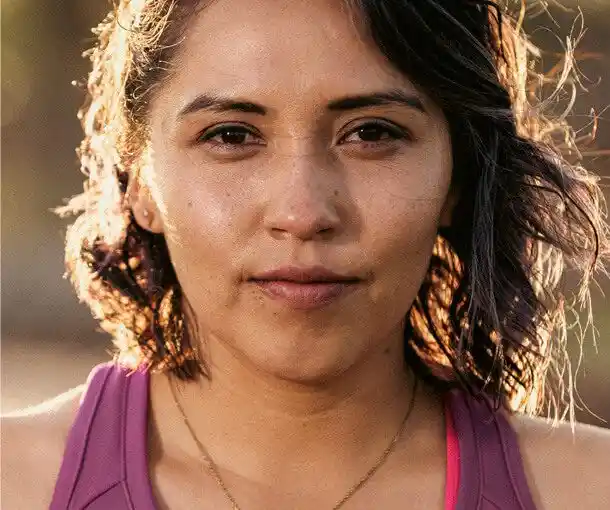What is osteoporosis?
Osteoporosis (meaning ‘porous bones’) is where bones lose density and become thin, weak, and fragile, leaving you more vulnerable to fracture as you age.1 Decreased bone density occurs when bones lose minerals such as calcium much faster than the body can replace them.
In 2017-18 854,000 Australians were estimated to be living with osteoporosis. Women having a higher prevalence compared to males when it came to musculoskeletal conditions.2
Risk factors for osteoporosis
Risk factors associated with the development of low bone density and osteoporosis include:1,3,4
- Getting older — Our bones are living tissue and are in a continual state of renewal. As we age, more bone is broken down (resorbed) than is replaced by new bone. Thus our bones get thinner and more fragile as we age.
- Low body weight — Men and women with lower body weight may have lower bone density to draw on as they age, contributing to increased osteoporosis risk.
- Having a family history of osteoporosis — If a parent or a sibling has been diagnosed with osteoporosis, you are more likely to develop osteoporosis.
- Low vitamin D levels — Vitamin D is needed to support bone health.
- Low calcium intake — Calcium is essential for building bone throughout your lifetime.
- Smoking — People who smoke lose bone density faster than people who don’t.
- Excess alcohol consumption — Heavy alcohol consumption can impair bone formation and increase the risk of falls.
- Limited physical activity — Weight-bearing exercises keep bones strong and healthy by working the muscles and bones against gravity. Exercise also improves your balance and may decrease your risk of falling.
- Reduced oestrogen levels — Oestrogen helps protect against bone loss.
Signs and symptoms of osteoporosis
The most common symptom of osteoporosis is breaking or fracturing a bone from a mild injury, such as falling over.
How to minimise the risk of osteoporosis
No matter your age, you can take action now to maintain bone density and reduce your overall risk.
Ensuring you get enough calcium and vitamin D through diet or supplements, regular weight-bearing and resistance exercise, and keeping alcohol intake low and not smoking will help reduce your risk of osteoporosis.
Nutrients to help minimise the risk of osteoporosis
Calcium
Calcium is a major structural element of bones and teeth, and is essential for maintaining bone density. 99% of the body’s calcium is stored in the bones and teeth. If you do not consume enough dietary calcium, the body will withdraw it from its bone reserves for use in other parts of the body6
Vitamin D
Vitamin D is essential for the absorption and use of calcium in the body. Vitamin D also helps support muscle function in the elderly. The main source of vitamin D is from exposure to ultraviolet radiation from the sun; therefore if sunlight exposure is limited, a vitamin D supplement may be necessary to support bone health.7,8
Magnesium
Similar to calcium, magnesium is an integral part of the structure of bones. Magnesium supports the absorption of calcium and bone mineral density in adults and pre-menopausal women when dietary intake is inadequate. Maintaining a sufficient dietary intake of magnesium is vital for bone health.9
Manganese
Manganese supports healthy bone development and bone health.10
Getting regular weight-bearing exercise and leading a healthy lifestyle with limited alcohol intake and no smoking can help you reduce your risk of osteoporosis. A healthy diet rich in bone-loving nutrients such as calcium, vitamin D3 can help give your bones what they need to stay strong and healthy.
Always read the label and follow the directions for use.
Learn about which Ostelin product may be appropriate for you
References available upon request.
MAT-AU-2401870
References
1 https://medlineplus.gov/osteoporosis.html
2 Osteoperosis Web Report. Australia Institute of Health and Wellness. Available from Chronic musculoskeletal conditions , About – Australian Institute of Health and Welfare (aihw.gov.au)
3 https://www.healthdirect.gov.au/osteoporosis
4 https://www.uofmhealth.org/health-library/te7603
5 InformedHealth.org [Internet]. Cologne, Germany: Institute for Quality and Efficiency in Health Care
(IQWiG); 2006-. Osteoporosis: Overview. 2008 Sep 11 [Updated 2018 Oct 18]. Available from: https://www.ncbi.nlm.nih.gov/books/NBK279529/
6 Institute of Medicine (US) Committee to Review Dietary Reference Intakes for Vitamin D and Calcium;
Ross AC, Taylor CL, Yaktine AL, et al., editors. Dietary Reference Intakes for Calcium and Vitamin D.
Washington (DC): National Academies Press (US); 2011. 2, Overview of Calcium. Available from:
https://www.ncbi.nlm.nih.gov/books/NBK56060/
7 Institute of Medicine (US) Committee to Review Dietary Reference Intakes for Vitamin D and Calcium;
Ross AC, Taylor CL, Yaktine AL, et al., editors. Dietary Reference Intakes for Calcium and Vitamin D.
Washington (DC): National Academies Press (US); 2011. 3, Overview of Vitamin D. Available from:
https://www.ncbi.nlm.nih.gov/books/NBK56061/
8 Vermeer C, Shearer M, Zittermann A, Bolton-Smith C, Szulc P, Hodges S et al. Beyond Deficiency:.
European Journal of Nutrition. 2004;43(6):325-335.
9 https://ods.od.nih.gov/factsheets/Magnesium-HealthProfessional/
10 Avila D, Puntel R, Aschner M. Manganese in Health and Disease. Metal Ions in Life Sciences.
2013;:199-227.







